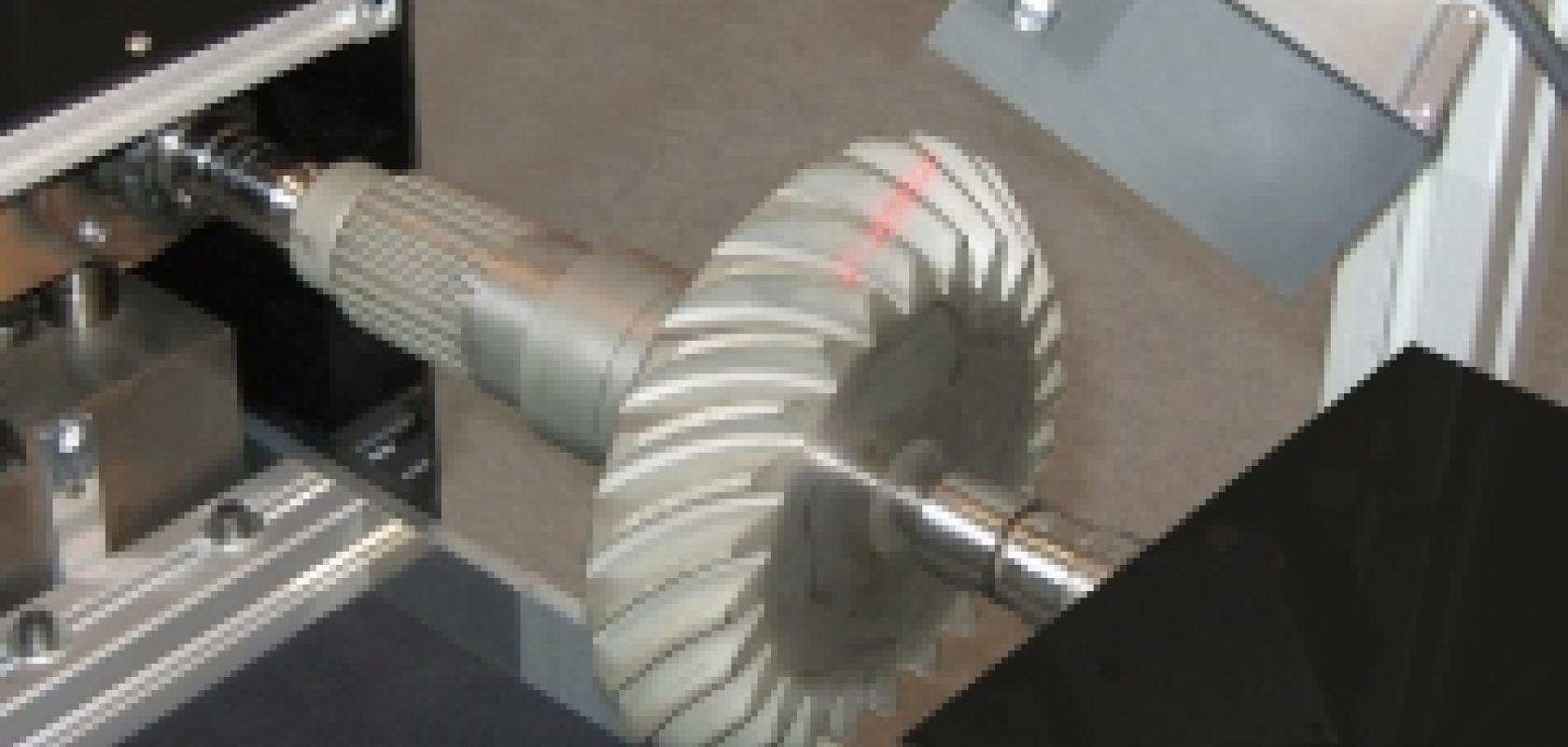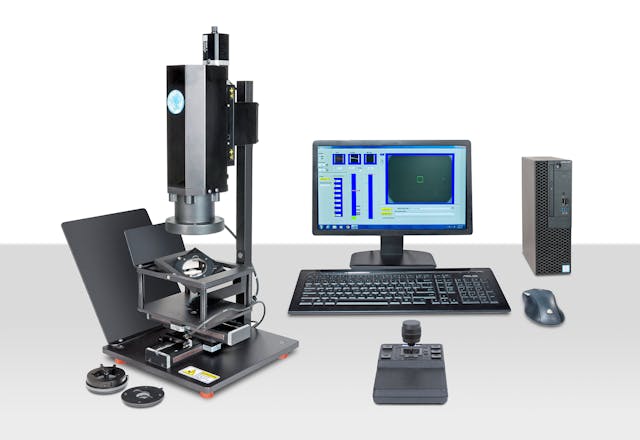Finding the best optical measurement method for your inspection needs
Finding the best optical measurement method for your inspection needs
Blog Article
The Duty of Optical Measurement Systems beforehand Metrology Strategies
Optical measurement systems have actually changed width, bringing a level of accuracy that was once unimaginable. You may be shocked to find out how these technologies, based upon basic principles like representation and disturbance, are applied throughout numerous industries. Their non-contact abilities not just enhance precision but likewise simplify processes. As you discover further, you'll find just how these systems are forming the future of dimension and quality assurance.
The Advancement of Assessment: A Historical Viewpoint
As you discover the history of metrology, you'll locate that its development reflects mankind's quest for accuracy and standardization. From ancient civilizations making use of body parts as devices of dimension to the advancement of standardized weights and procedures, each step reveals our desire for accuracy. The Egyptians constructed the pyramids utilizing precise dimensions, while the Romans progressed engineering with their innovative measuring tools.
During the Renaissance, clinical developments shifted the focus towards much more empirical methods, leading the way for modern assessment. The intro of the metric system in the late 18th century noted a considerable milestone, developing global standards. Throughout the 20th century, technical developments better transformed width, making it possible for extremely exact dimensions in various areas.
Today, assessment proceeds to advance, integrating digital innovation and automation. This background highlights not simply the significance of measurement however likewise our unrelenting search of improving accuracy and consistency in our progressively complicated globe.
Concepts of Optical Measurement Solutions
Comprehending the principles behind optical measurement systems is necessary for accurate lead to width. You'll want to take into account fundamental optical principles, measurement precision factors, and effective system calibration techniques. Each of these elements plays an important duty in guaranteeing your dimensions are dependable and accurate.
Fundamental Optical Concepts
While discovering optical measurement systems, you'll come across fundamental optical principles that create the backbone of precise information acquisition. Light behaves in foreseeable means, and comprehending these habits-- like refraction, diffraction, and representation-- is vital for reliable dimensions. By mastering these principles, you'll be furnished to utilize optical technologies efficiently, leading the means for advancements in metrology and ensuring your dimensions are both repeatable and dependable.
Dimension Precision Variables
To attain high dimension accuracy in optical systems, numerous elements come right into play, affecting the reliability of your outcomes. Premium lenses and detectors decrease aberrations and sound, ensuring your dimensions are precise. By resolving these elements, you can boost the overall efficiency of your optical dimension systems, leading to more reputable and precise outcomes in your metrology applications.
System Calibration Methods
Accomplishing high dimension accuracy is just part of the formula; proper system calibration strategies are similarly essential in optical measurement systems. Next off, use recognized measurements to confirm the system's output and make essential adjustments. With these techniques, you'll improve the reliability of your optical dimension system.
Key Technologies Behind Optical Measurement
Optical dimension systems depend on numerous crucial technologies that improve precision and efficiency in width. One important technology is interferometry, which utilizes the disturbance of light waves to measure little variations and surface area irregularities with extreme precision. You'll additionally find laser scanning systems, which catch in-depth 3D information of objects rapidly, making them very useful for dimensional analysis.
Furthermore, CCD and CMOS sensing units play a significant function in converting light right into electric signals, permitting for high-resolution imaging and precise measurements. Advanced algorithms for image processing additionally boost dimension accuracy by analyzing data in real time, removing noise and improving functions.
Ultimately, fiber optics provide flexibility and the capability to determine in challenging atmospheres while preserving signal stability. By leveraging these innovations, you can accomplish premium lead to your width jobs, making certain that your dimensions are both trusted and exact.
Applications of Optical Dimension in Industry
As industries increasingly require accuracy and efficiency, the applications of optical measurement systems have actually ended up being important across numerous fields. In production, these systems help you monitor measurements and resistances in real-time, guaranteeing quality assurance without taxing hands-on checks. In the automobile sector, optical dimensions assist in straightening elements with precision, boosting security and performance.
In i thought about this electronic devices, you're making use of optical techniques to inspect min functions on circuit boards, spotting issues that might lead to failures. The aerospace field advantages from non-destructive testing methods, allowing you to examine materials and elements without compromising their stability.
Optical measurement likewise plays a vital function in fabrics, ensuring material measurements satisfy specific specifications. optical measurement. With their capability to give high-resolution data swiftly, these systems encourage you to make educated choices, improve procedures, and inevitably drive development across your sector
Enhancing Precision and Efficiency in Measurements
When you think of enhancing accuracy in measurements, accuracy in your dimension strategies is vital. By simplifying these processes, you can achieve quicker results without compromising top quality. Allow's explore exactly how taking on innovative optical measurement systems can elevate both precision and effectiveness in your work.
Precision in Dimension Techniques
Precision in dimension strategies is vital for achieving trusted cause width, specifically since tiny disparities can cause considerable mistakes. By using sophisticated optical measurement systems, you can improve the accuracy of your dimensions. These systems give high-resolution information that assist you find also the tiniest variations in dimensions. You minimize unpredictabilities and boost repeatability in your processes when you take on these modern technologies. In enhancement, exact measurements allow you to keep quality assurance, ensuring that items satisfy strict specifications. This not just improves your integrity yet likewise enhances consumer fulfillment. Investing in accuracy measurement devices ultimately leads to boosted efficiency, lowered waste, and enhanced manufacturing cycles. Accepting these techniques will certainly transform your strategy to assessment, generating impressive outcomes.
Enhancing Dimension Procedures
To enhance accuracy and performance in measurements, improving your measurement procedures is essential. Begin by taking on optical dimension systems that offer real-time information, lowering the moment spent on manual recording. These systems frequently integrate effortlessly with existing software application, permitting you to automate information collection and analysis.
Following, standardize your measurement protocols. By executing regular procedures, you reduce variability and enhance repeatability. Don't neglect to routinely calibrate your equipment to guarantee its accuracy.

The Impact of Optical Measurement on R & D
As scientists undertaking to press the boundaries of development, optical measurement systems have ended up being crucial devices in the growth procedure. These systems give you with precise, real-time data that boosts your ability to analyze complex materials and structures. In various fields, from biotechnology to aerospace, you rely on optical dimensions to optimize layouts and boost item performance.

With high-resolution imaging and non-contact techniques, you can reduce sample disruption, enabling even more precise results. This capacity to record minute information accelerates your R&D cycle, letting you repeat check here styles rapidly and efficiently. Furthermore, optical dimension cultivates cooperation across disciplines, as the data created is usually quickly interpretable and shareable.
Ultimately, incorporating optical measurement systems right into your research not just increases performance however also strengthens your understanding of the phenomena you research study. By leveraging these advanced strategies, you're much better geared up to introduce and stay in advance in an affordable landscape.
Future Trends in Optical Dimension Systems
With the quick development of technology, you're most likely to see significant changes in optical measurement systems that will certainly redefine their application across numerous markets. You'll see a step toward boosted automation and integration of synthetic knowledge, permitting for real-time information analysis and improved precision. Miniaturization is an additional trend; small tools will certainly enable measurements in tighter areas, making them ideal for fields like aerospace and biomedical applications.
Additionally, the arrival of advanced materials, such as photonic crystals, will enhance sensitivity and resolution. Anticipate to see systems that can operate in tough atmospheres, providing reliable dimensions in severe problems. Cloud-based analytics will certainly also play an important function, offering you access to big datasets for much better decision-making. As these innovations assemble, you'll discover that optical measurement systems not only improve precision however likewise improve workflows, eventually driving development and effectiveness in your projects.
Regularly Asked Concerns
How Do Optical Dimension Equipments Compare to Traditional Dimension Techniques?
Optical dimension systems use higher accuracy and faster results compared to standard methods. You'll find they record even more data factors accurately, reducing human mistake and enhancing reliability, making them a favored choice in numerous applications.
What Industries Benefit The Majority Of From Optical Dimension Systems?
You'll locate industries such as aerospace, automobile, and electronics profit most from optical measurement systems. These fields depend on precise dimensions to assure high quality and efficiency, improving performance and decreasing prices through innovative technology.

Are Optical Measurement Equipments Expensive to Apply?
Optical dimension systems can be costly to execute, but their accuracy and performance commonly validate the cost. Investing in such technology can cause significant long-term financial savings and enhancements in quality throughout numerous applications.
What Skills Are Required to Run Optical Measurement Systems?
To operate optical dimension systems, you'll require strong analytical skills, attention to information, and proficiency in software program devices. Experience with optics and an understanding of dimension principles will certainly likewise enhance your efficiency and efficiency.
Just How Do Environmental Variables Impact Optical Measurements?
Environmental variables like temperature, moisture, and air top quality can distort optical measurements. You'll see variations in precision because of light disturbance or refraction. optical measurement. Preserving secure conditions is important for exact and reputable optical dimension results
Verdict
In recap, optical measurement systems are changing metrology by offering unmatched precision and efficiency. As you explore future trends, you'll see exactly how the combination of AI and automation will continue to raise measurement techniques, driving development and enhancing top quality control.
Achieving high measurement accuracy is only part of the formula; appropriate system calibration strategies are equally essential in optical useful site dimension systems.When you believe about improving accuracy in measurements, accuracy in your measurement methods is necessary. By using advanced optical dimension systems, you can boost the precision of your dimensions.To improve accuracy and performance in dimensions, improving your dimension processes is necessary. Just How Do Optical Measurement Solutions Compare to Typical Dimension Techniques?
Report this page